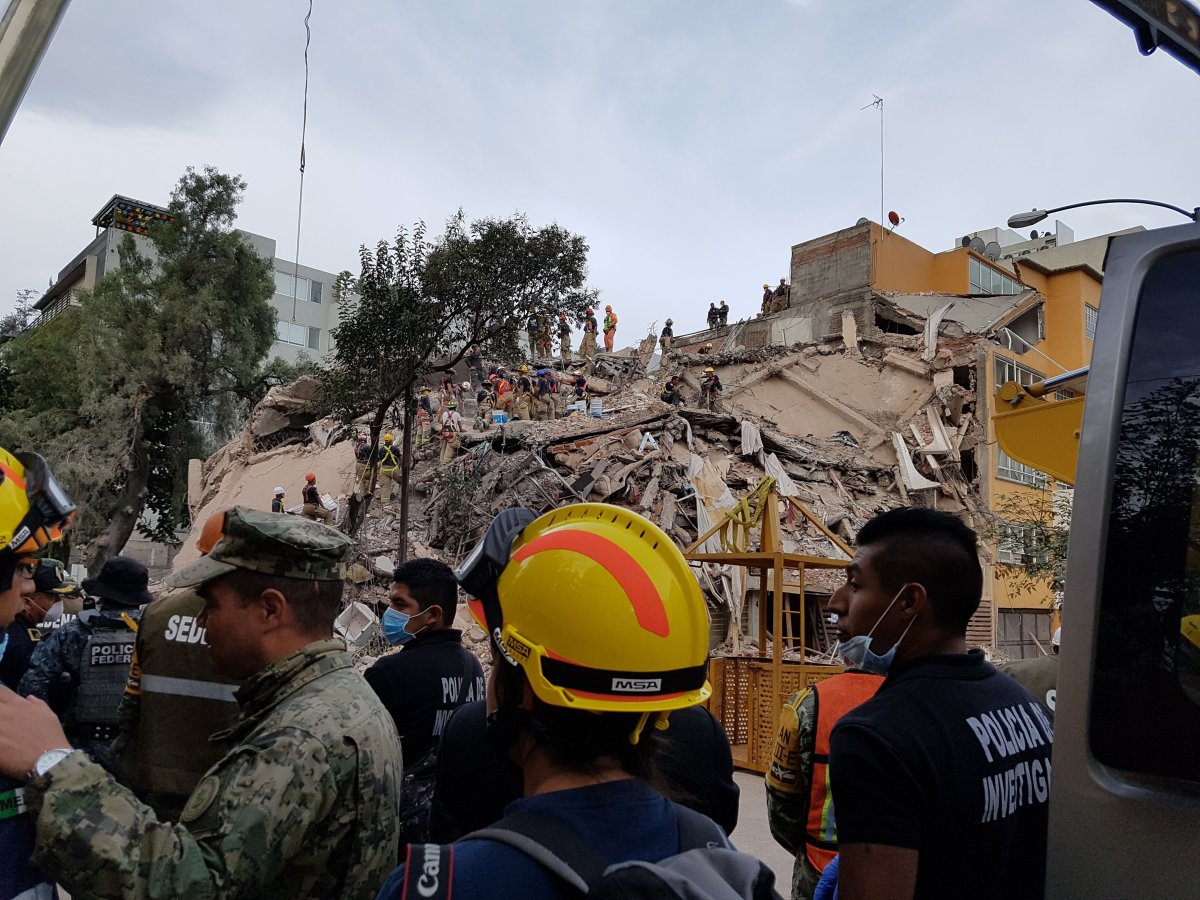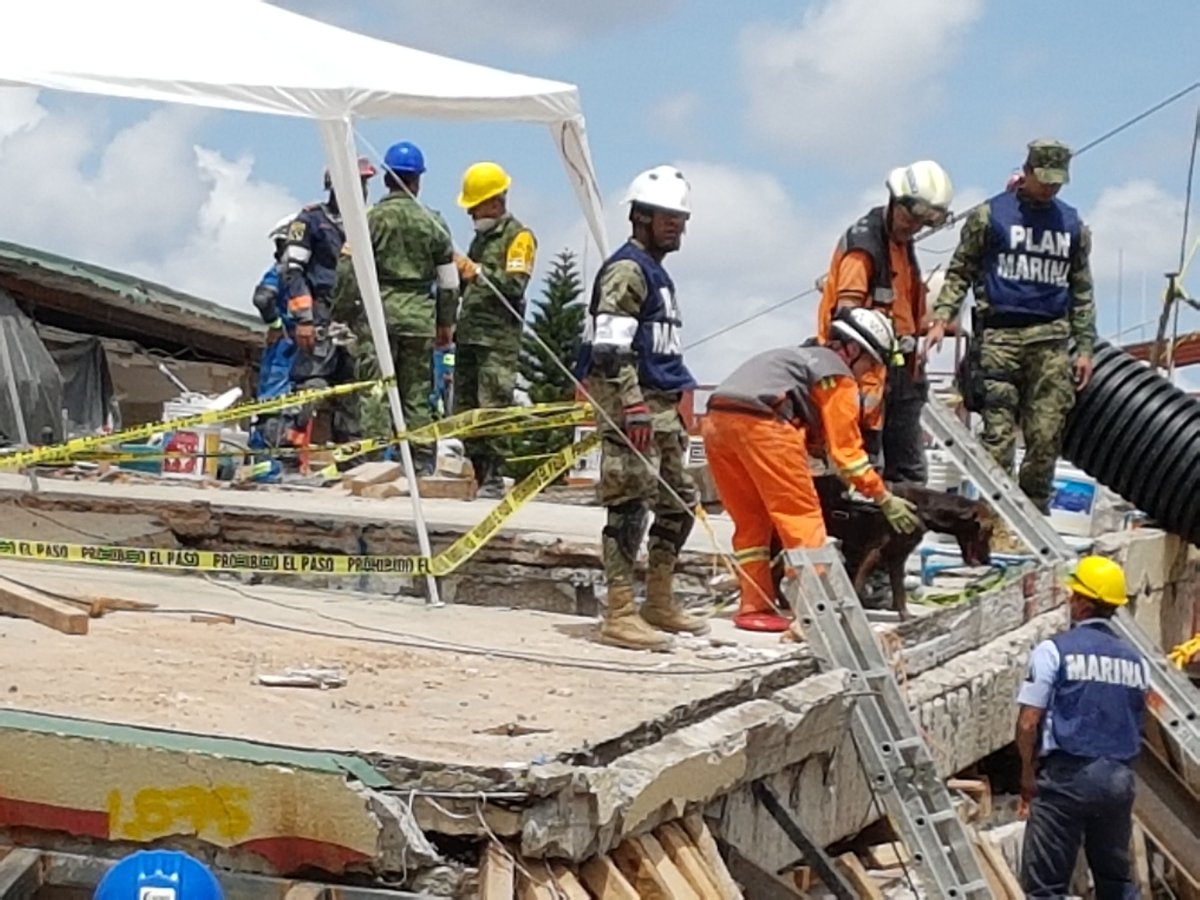Members of the Canadian Search and Disaster Dog Association are in Mexico City helping with the search and rescue efforts. A small team was deployed last Friday.

“They are there to try to look for survivors. The search and rescue crews that are in Mexico, the Mexico National Team, they’ve been working extremely hard, non-stop basically, since the earthquake happened,” CASDDA president Richard Lee said.
“They did email us and let us know that they could use some help so we dispatched seven members and six dogs to help out with the search efforts.”
“The last report shows they have found three victims. Unfortunately, none of them was alive by the time they found them,” Lee said. “One of them was the last teacher they were looking for in that school that collapsed.”
READ MORE: No girl trapped in collapsed Mexico school; all students are accounted for, officials say
Watch below: A canine rescue team from Alberta is on the ground in Mexico to help with the search for earthquake survivors. The dogs specialize in finding victims that rescue teams cannot see or hear. Carole Anne Devaney has more on the organization.

The group is made up of volunteers. It takes approximately two years to train each dog.
“Dogs are trained to look for the freshest and strongest human scent they can find,” Lee explained.
“If they find somebody alive, they will start barking like crazy, they may start trying to dig, they will be barking, indicating where the actual person is.
READ MORE: Manitobans fearful for their families trapped in Mexico City following horrifying earthquake
“If they find somebody who’s passed away, what they will be doing is mainly scratching, they may also bark in frustration… they will be looking back at the handler. That is how we know that their find is either somebody who is still alive — in which case, we stop everything, call in the rescue crews right away to start the excavation process — or if that person has passed away… we’ll mark that spot for later recovery and the team will continue to search, trying to find live victims first.”
A strong new earthquake shook Mexico on Saturday, toppling already damaged homes and a highway bridge and causing new alarm in a country reeling from two even more powerful quakes this month that together have killed nearly 400 people.
LISTEN: Richard Lee joins The John Oakley Show on AM640
The U.S. Geological Survey said the new, magnitude 6.1 temblor was centred about 11 miles (18 kilometres) south-southeast of Matias Romero in the state of Oaxaca, which was the region most battered by a magnitude 8.1 quake on Sept. 7.
It was among thousands of aftershocks recorded in the wake of that earlier quake, which was the most powerful to hit Mexico in 32 years and killed at least 90 people.
READ MORE: 3rd earthquake hits Mexico in September, this time of magnitude 6.8
Lee said the rescue dogs are extremely accurate when you consider the chaos and confusion of a disaster situation.
“If you have a rubble situation and somebody is trapped, the scent will spread through all the cracks within the rubble. The dogs will indicate on the crack, where the scent is coming out the strongest,” he said.
“We have our dogs working in teams of three. We have the second dog come in to confirm that this is indeed a find. If the second dog is unsure, then we will have the third dog to act as the confirmation dog. Once we have confirmation that somebody is in that location, we will call in the crew to start the excavation process and they will do some excavation and the dogs will go in again to try and refine where the person is and try to localize it better and better as they go down further.”
READ MORE: Vancouver paramedic in Mexico says more help is needed to find survivors
Lee said the team has a variety of breeds working with them, but the known working breeds are most common, like Border Collies, Labradors and Retrievers. However, as long as the animal is hard working and not too large or small, it can be taught.
“We do have to put them through a screening process to make sure the dog is suitable but as long as the dog is not shy, loves to play, loves to tug or fetch… then usually, we’re able to take that dog and train them.”
A CASDDA team was also deployed to help in Haiti after Hurricane Matthew, where it helped rescue a young boy trapped in debris.

















Comments